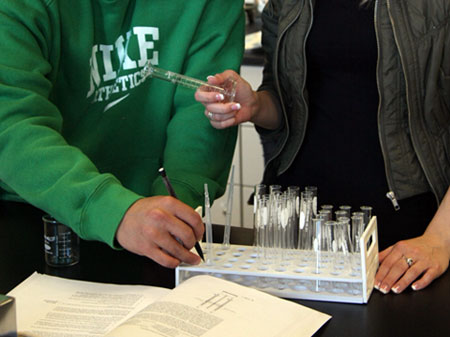The Communication Sciences Laboratory at Arizona State University conducts perceptual, behavioral, and physiological research connecting interpersonal communication with mental and physical health. The laboratory is located in room 349 of Stauffer Hall (A wing), on the northwest corner of campus.
Dr. Kory Floyd is director of the Communication Sciences Laboratory and professor of human communication. His research focuses principally on the communication of affection in social and personal relationships, including its associations with physical and mental health. Doctoral students currently involved in the Communication Sciences Laboratory are: Colter Ray, James Stein, and Lisa van Raalte.
Lab Facilities and Equipment
Research in the Communication Sciences Laboratory focuses on the physiological correlates and outcomes of interpersonal behavior.
The lab is equipped for on-site analysis of blood lipids, serum glucose, and glycosylated hemoglobin. These tests are conducted using capillary blood drawn by pinprick from a finger. Laboratory personnel have been trained in safety measures and the avoidance of blood-born pathogens, and employ universal precautions when handling blood samples. Additionally, the laboratory is furnished with equipment for taking and storing saliva samples for the analysis of several hormone and immune markers. Research in the laboratory has focused on cortisol, testosterone, dehydroepiandrosterone-sulfate, estradiol, secretory immunoglobulin-A, natural killer cells, c-reactive protein, and antibodies to Epstein-Barr virus.
Current Projects
Affectionate Touch and Pain Perception
Several previous studies have shown that affectionate behavior, especially touch, ameliorates the body’s stress response. This project investigates the ability of affectionate touch to attenuate the body’s pain response. Participants take part either with a romantic partner, a platonic friend, or a stranger. As participants undertake a pain induction (either cold pressor or pressure pain), their companions are either touching them, standing quietly next to them, or waiting in an adjacent room. Predictions focus on the effects of touch and/or relationship type on participants’ pain thresholds and pain tolerance.
Genetic Antecedenta of Empathic Behavior
This study, conducted in conjunction with the Arizona School of Health Sciences at A. T. Still University, examines the genetic foundations of empathic communication behavior in students training to be physician assistants. PA students undertook three video-taped clinical interviews with standardized patients, after which their empathic behavior was rated by the students themselves, the patients, clinical instructors, and third-party observers. Saliva samples collected from PA students were genotyped for several single-nucleotide polymorphisms on the oxytocin receptor gene. Preliminary analyses show that instructors’ and observers’ assessments of students’ empathic behavior were predicted by students’ genotypes. Additional analyses will focus on the potential mediating effects of students’ coded verbal and nonverbal behaviors.

